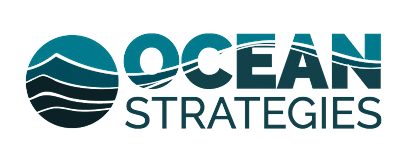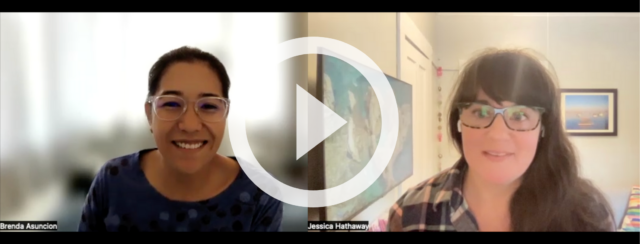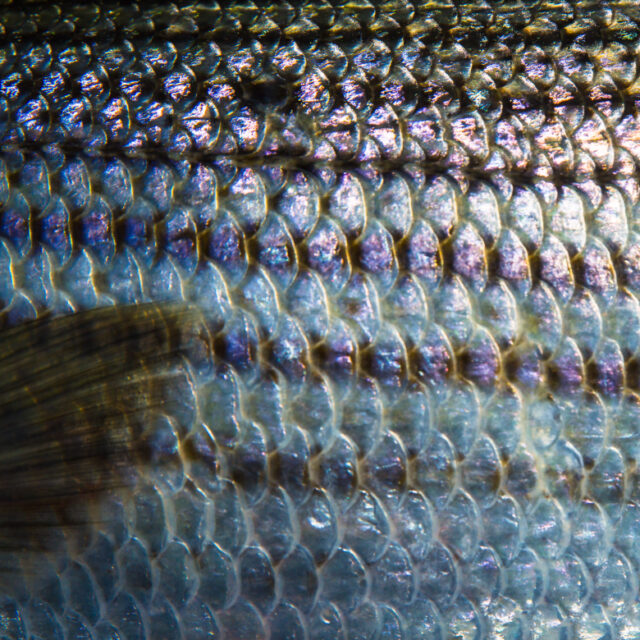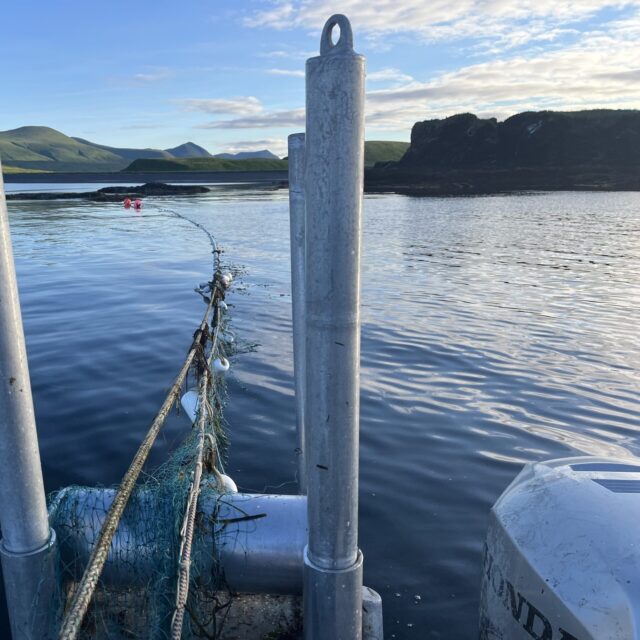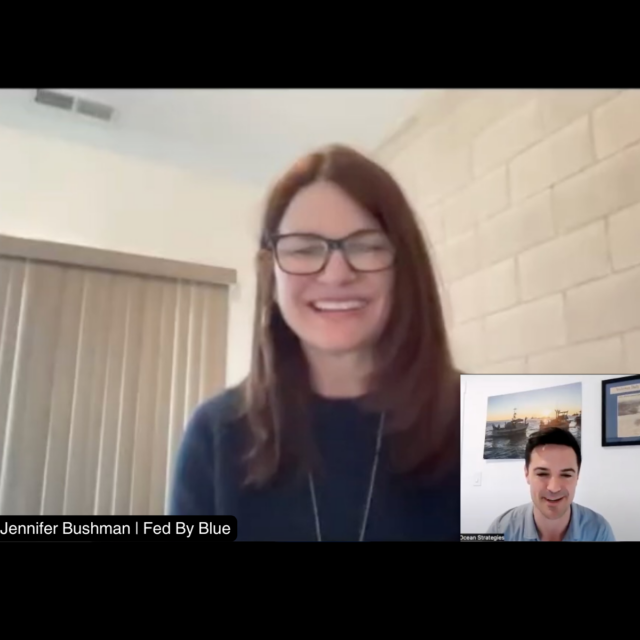Q & A with Brenda Asuncion
Ocean Strategies Senior Consultant Jes Hathaway sat down with Brenda Asuncion, the Hui Mālama Loko I’a Coordinator for Kua’aina Ulu ‘Auamo (KUA), to discuss the restoration of traditional Hawaiian fishponds, the Hawaiian communities’ role as caretakers of their lands and waters, and how we can advance community-based natural resource management through continued advocacy for indigenous practices and food systems.
Watch the full interview with Brenda Asuncion and Jes Hathaway on YouTube.
Brenda Asuncion is the Hui Mālama Loko I’a Coordinator for Kua’aina Ulu ‘Auamo (KUA), a nonprofit organization working to advance community-based natural resources management in Hawai’i by restoring Hawaiian communities’ traditional role as caretakers of their lands and waters. Brenda’s primary kuleana (responsibility) is to coordinate the Hui Mālama Loko I’a, a network of more than 60 loko i’a (traditional fishponds) across Hawai’i, and provide opportunities for loko i’a practitioners to collaborate and increase their collective restoration efforts.
Brenda is based on the island of O’ahu. She received her bachelor’s in Biology with a Marine Biology emphasis from Occidental College, and a masters in Marine Science from Hawaiʻi Pacific University. In 2016, Brenda was named one of Pacific Business News’ 40 Under 40.
Jes: Brenda, thanks so much for joining us today. I’m excited to talk about your work restoring traditional Hawaiian community seafood practices. But for an icebreaker, I’m going to start with: What is your favorite seafood and how do you prepare it?
Brenda: In April my Chinese side of the family has a tradition of bringing food to the graveyards to feed our ancestors. We need to make a vegetable dish, a fish dish, and a pork dish. We use bonefish to make fish cakes with water chestnuts and vegetables. So because this occasion is coming up soon and it’s on my mind, that’s my favorite seafood preparation for this season. It’s meaningful because it has memories and a family tradition attached to it.
Jes: Can you walk us through an overview of the history of loko i’a of Hawai’i? What lessons can other seafood and community leaders learn from this practice?
Brenda: “Loko” is a directional word which means inside or within, and “i’a” is the name for fish or anything grown in the ocean. People think of this word referring only to fishponds, but the function extended not only for coastal and nearshore waters, but up into the whole watershed. Fish were grown in conjunction with wetland agriculture, like alongside a stream or near groundwater sources. In their coastal forms they enhance the estuary environment. The infrastructure of the pond enclosure, like rock walls or growing coral, was used to enhance the productive estuary area and for growing phytoplankton to feed the fish.
The rise of fishpond construction on the islands is associated with a phase of population growth. We can think about this construction and maintenance as a reflection of the traditional land and resource management structures in Hawai’i. Local land managers and chiefs would commission the construction of ponds and the general population in those areas would contribute to maintaining them.
As far as what lessons can be learned, we can think of this practice as it applies to our community public works projects today. Fishponds are a way to enhance public ocean resources at the direction of community leaders, along with the cooperation of community members.
It’s interesting to think about how we can apply these communal food systems today. We can understand what reviving them means in Hawai’i and how those benefits fit into our current political and social structures. So communal contributions, public resources, and effective leadership – these are all broad concepts we can learn from fishponds.
Jes: This makes me think about our historical response to population growth. In western culture we have filled in so many of these estuary areas, but what we’re discussing is the opposite of that. It’s improving those areas to help feed the community and not provide more spaces to live.
Brenda: A lot of our ponds and valuable estuary and nearshore areas were lost to that development. The line of thinking that came from western civilization affected these traditional fishponds.
Jes: I want to talk about how we can apply those lessons to global environmental issues that are directly affecting coastal communities, such as climate mitigation, invasive species and shifting species? Have you seen any marked changes in community resiliency in the face of climatic change through the work you’ve done?
Brenda: Fishpond practitioners have seen the water levels in extreme tides rise to an extent like never before. Some of these structures are 600-800 years old, and are now in the second generation of practitioners working to restore them. So this experience shows what we need to consider and what we need to set in place for the next generation to take on this work.
Continued advocacy for indigenous practices and food systems is so important. These places existed for thousands of years because our ancestors were able to adapt them to change. In order to enhance the resiliency of these places and communities we need to find a policy avenue that will facilitate the adaptation needed.
In restoring fishponds, a lot of regulatory barriers are around the physical restoration requirements. Permits are required just to dredge or move structures around. People have advocated for decades to say there is no environmental impact in restoring these places. The fishponds were designed to reduce impact and enhance habitat productivity. So policy can push the boundary even further and help us identify where we can create fishponds next – these locations will change and adapt based on changing coastal conditions. So we need to find how regulatory barriers can be chipped away at now so the next generation doesn’t have to fight this.
Jes: How has food sovereignty/security changed for Indigenous people of Hawai’i and their communities?
Brenda: There’s a long history of disruptions in land tenure and political framework that allowed for traditional land and resource management. Because of this there are a lot of threads that lead to displacement from land and reduced access to land, as well as displacement from freshwater resources needed for farming and nearshore production.
All of this interconnectedness has reduced the ability to be food secure, not just for growing food but importing too – 80-90% of the food on the islands is imported. Prior to western contact there was a population of one million, and that population was sustained without importing resources. This shows that the islands can be food secure given the natural access to lands and oceans. It’s not just physical lands that have changed, but a change of our political and social infrastructure that affects food security.
The small-scale work being done to restore traditional agriculture systems in a way to rebuild food sovereignty in those small communities. What KUA is able to connect these communities to empower one another and build their collective power, even if they’re separated across islands.
There is a strong vision that with building this connectedness across Hawaiian communities can build back the food sovereignty of the islands.
Jes: Thanks so much for sharing this. You’re bringing things back to the beginning in order to restore them. All the cultural changes you talked about affect the ability for people to engage with the caretakers of the ponds. With the ponds being a community resource, when that access is lost and even the memory is lost, you’re having to start from scratch – it’s very remarkable and inspiring.
So on our tour of the fishponds, our guide pointed out that fish ponds are not considered aquaculture — the fish are wild, and I got the impression that the distinction is that they are not fed by pond caretakers. Can you talk about where and why this line might be drawn culturally?
Brenda: The whole network might have different views on this. It comes down to how we interpret the word “aquaculture.” A lot of us think about aquaculture as conventional modern practices – fish that are grown in tanks with genetic modification and breeding in closed environments – so in that sense people would say fishponds aren’t aquaculture. In fishponds the fish are wild. Juveniles are naturally recruited into the ponds when they are small and then cultivated in the ponds. They are not physically fed food, and instead the maintenance of the pond facilitates algae growth for the fish to eat. So they’re fed in the sense of taking care of the habitat that grows the food for them.
Most fishponds have an exchange with the wild fish populations; the spawning of fish in the wild is what provides the recruits to stock the ponds.
I’m still learning about other forms of indigenous aquaculture practices around the world. I know there are fish traps and weirs, and land-based ponds, so I think the notion of these cultivations is a part of what the loko i’a practice describes. The word for a person that works in a fishpond – mahi iʻa – is similar to mahiʻai or a farmer (with mahi meaning to cultivate), and that phrase distinguishes it from lawaiʻa, the word used for a fisherperson. A fishpond is distinguished from wild capture because of that cultivation aspect. So I think there is a distinction in definitions.
